Walnut / All year round / Edible
A deciduous, broadleaf tree, it was introduced to the UK by the Romans.
Common Names
Walnut, English Walnut, Persian Walnut, Common Walnut
Botanical Name
Juglans regia
Scientific Classification
Kingdom – Plantae
Order – Fagales
Family – Juglandaceae
Physical Characteristics for Walnut
Leaves
The leaves are shiny and pinnate, with 5–9 paired oval leaflets and one terminal leaflet at the end. The leaves overall can be up to 40cm long, range from 10-30cm in length and they smell of furnish polish when they are crushed.
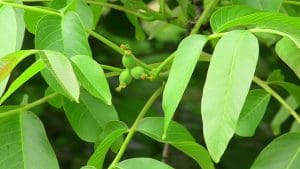
Bark
The bark is smooth and olive-brown when young, developing fissures and fading to silver-grey with age. It is thin when the tree is young, but it gradually grows thicker with age. As the tree matures the bark thickens into grey-brown flaky scales.
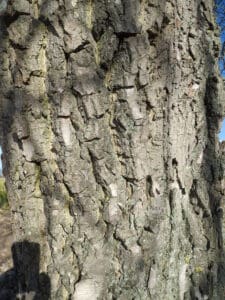
Flowers
The male flowers are drooping yellow-green catkins, around 5–10 cm long. The female flowers appear in clusters of 2–5, it is these that will become the fruit in Autumn.
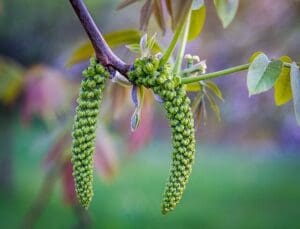
Fruits
The fruits remind me a little of conkers but without the spikes. They are green and fleshy when their young, oval and have small white spots on the flesh. Inside this husk is the nut that we are more familiar with. When the fruits first appear in June the nut is soft but after a few weeks they will get harder and darker in colour.
Habitat
It’s quite often found planted in parks and formal gardens but it has naturalised in some areas in the South. It prefers fertile, alkaline soil.
Known Hazards
The nuts, if not stored correctly, can develop a fungi called Aspergillus, this produces aflatoxins which are known to be carcinogenic. To put it into context the same can happen with peanuts and corn.
Also be aware of the juice, it’s used as dye for fabrics and wood and will stain your hands and anything else it touches!
Could be Confused with
The Black Walnut (Juglans nigra) is another imported species, it’s mostly grown for its timber and it’s less common, its nuts can also be eaten. The Black Walnut has more leaflets which are toothed and the bark is darker in colour.
Edible Uses
The green fruits are collected in summer and typically used in pickles, candied or infused in alcohol or syrups.
For some recipes you are advised to ‘leech’ them before hand in water for at least a few hours, this is to remove some of the tannins that are very bitter.
The ripe, brown nuts are ready in autumn as the soft flesh rots and breaks away. Break the shell open and inside will be the brain like nut we know and love.
These can be used in lots of different ways, they work in sweet and savoury dishes.
The leaves can be dried and used for teas, they have a sweet, aromatic flavour and are said to be good for digestion.
Notes on Herbal Uses
In older times when the ‘Doctrine of signatures’ was popular they were thought to be good for brain health as they resemble a human brain. Modern research has found that they contain chemicals that can expand blood vessels, possibly improving circulation and the way the heart works. They have been shown to improve cognitive function and reduce the risk of developing dementia.
In herbal the Walnut is used for lowering cholesterol, as a blood purifying agent, to treat digestive tract inflammation and blood poisoning.
Some people apply the Walnut hull directly to the skin for skin diseases, skin infections, and eyelid swelling. It is also used in hair dye and in sunless tanning products.
The leaf is applied to the skin to treat conditions such as acne, eczema, ulcers, and infections.
Extra notes from the Foragers
The Walnut tree produces chemicals in its root systems that inhibit the growth of other species. It’s a phenomenon called ‘allelopathy’ quite a few species use it to stop other plants out competing them.
The botanical name Juglans regia, means the ‘royal nut of Jupiter’.



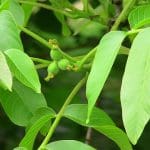
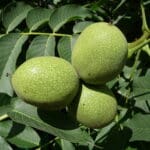
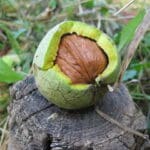
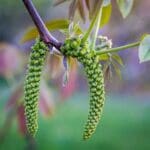
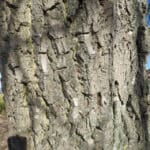
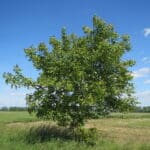



Leave a Reply
You must be logged in to post a comment.